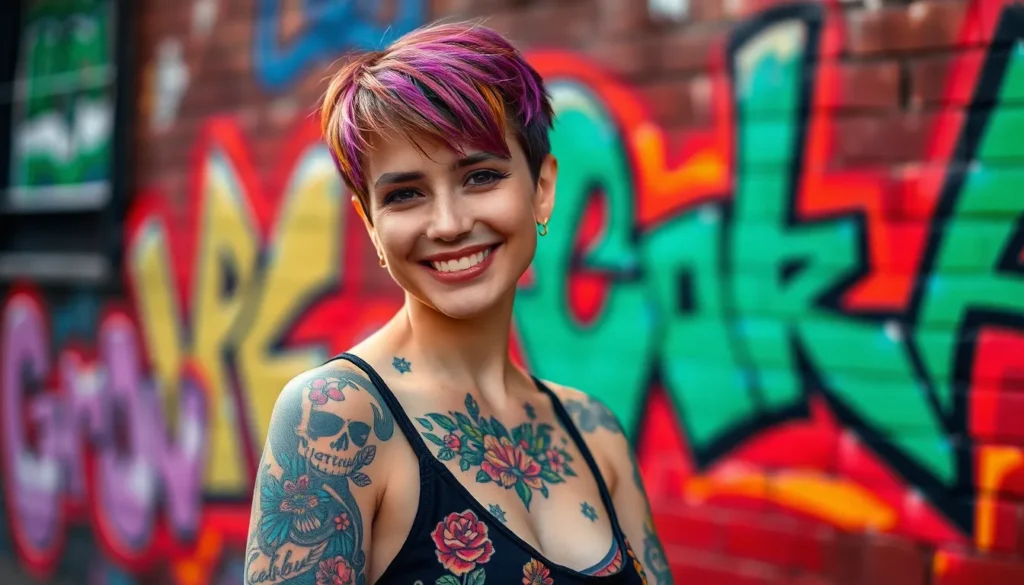Table of Contents
ToggleTattoos have transformed from symbols of rebellion to celebrated forms of self-expression. Once associated with sailors and outlaws, they’ve now permeated mainstream culture, captivating people from all walks of life. But when did this shift happen?
The rise of tattoos as a popular art form can be traced back to the late 20th century, particularly during the 1960s and 70s. As counterculture movements flourished, tattoos began to symbolize individuality and freedom. Today, they’re embraced by celebrities and everyday individuals alike, reflecting personal stories, beliefs, and aesthetics. Understanding the timeline of this evolution sheds light on the cultural significance of tattoos in modern society.
The History of Tattoos
Tattoos have a rich history, tracing back thousands of years across various cultures. They evolved from early forms of body art into a modern expression of identity and artistry.
Ancient Origins
Tattoos date back to ancient civilizations, with some of the earliest evidence found in Egyptian mummies dating around 2000 BCE. Archaeological discoveries indicate that tattoos served both decorative and ritualistic purposes. For instance, the Iceman, Ötzi, discovered in the Alps, displayed over 60 tattoos believed to hold therapeutic or spiritual significance. Additionally, ancient practices in Polynesian cultures involved intricate designs that denoted family lineage and social status.
Tattoos in Different Cultures
Tattoos have held varying meanings in cultures worldwide. In Japan, the irezumi tradition involved elaborate full-body tattoos, often associated with the Yakuza. In contrast, Native American tribes used tattoos for rites of passage and to symbolize bravery. Polynesian tattoos, known as ta moko, were deeply connected to identity, marking important life events. In Western society, tattoos initially marked rebellion, especially among sailors and criminals, but they transformed into a popular form of self-expression by the late 20th century, reflecting personal narratives and artistic endeavors today.
The Rise of Tattoos in the 20th Century

Tattoos gained significant popularity during the 20th century, transforming from symbols of rebellion to mainstream expressions of identity. This evolution was influenced by various cultural and social factors, particularly in the latter half of the century.
Influence of Sailors and Soldiers
Sailors and soldiers heavily impacted the tattoo resurgence in the 20th century. Sailors, known for their adventurous lifestyles, often inked tattoos as badges of honor or reminders of their journeys. Common designs included anchors and nautical stars. World War II further popularized tattoos among soldiers, who sought permanent reminders of their experiences and camaraderie. With the war’s end, returning servicemen brought these cultural symbols home, leading to a wider acceptance of tattoos among the general population.
The Role of Media and Celebrities
Media and celebrities played crucial roles in the tattoo’s rise to prominence. In the 1960s and 70s, counterculture movements celebrated tattoos as symbols of individuality. Icons like Janis Joplin and Jimi Hendrix showcased tattoos, linking them to the freedom of expression. The advent of tattoo-focused television programs in the late 1990s and early 2000s further mainstreamed the art form. Shows like “Miami Ink” elevated tattoo culture, highlighting artists and clients, and encouraging broader acceptance across diverse demographics. This visibility solidified tattoos as a cultural norm, embraced by both public figures and everyday individuals.
Tattoos in Modern Society
Tattoos gained substantial cultural acceptance and became mainstream in recent decades. Societal perceptions shifted, with tattoos evolving into popular art forms and personal statements.
Cultural Acceptance and Mainstreaming
Cultural acceptance of tattoos increased significantly during the late 20th century and into the 21st century. Studies show that over 30% of Americans aged 18 to 29 have at least one tattoo, reflecting a broad demographic embracing this form of self-expression. Many workplaces now view tattoos as acceptable, leading to policies that allow employees to display their tattoos openly. Various media portray tattoos positively, showcasing them in fashion magazines and television shows. This normalization has encouraged individuals from diverse backgrounds to get tattooed, further embedding tattoos in popular culture.
The Impact of Social Media
Social media transformed the tattoo landscape, allowing artists and enthusiasts to showcase work globally. Platforms like Instagram and TikTok serve as galleries for diverse tattoo styles, with artists gaining substantial followings. Studies indicate that around 74% of potential clients research tattoo ideas online before consulting with artists. Social media facilitates community-building among tattoo lovers, encouraging shared experiences and trends. Viral tattoo challenges and popularity of hashtag campaigns enhance visibility for various tattoo styles and artists. This has contributed to an increase in tattoo adoption across all age groups, reinforcing their role in modern identity.
Current Trends in Tattoo Popularity
Current trends in tattoo popularity reflect an increasingly diverse landscape, where personal expression meets artistic innovation. The evolution of tattoo designs and a varied demographic of enthusiasts highlight their profound place in contemporary culture.
Popular Designs and Styles
Current popular designs include minimalistic tattoos, watercolor styles, and intricate geometric patterns. Minimalistic tattoos often feature thin lines and simple forms, appealing to individuals seeking understated elegance. Watercolor tattoos use vibrant colors to mimic the appearance of brush strokes, creating an artistic effect. Geometric tattoos combine shapes and symmetry, attracting those who appreciate modern aesthetics. Custom designs, based on individual stories or interests, showcase a personalized touch. Additionally, traditional styles like American traditional and Japanese irezumi remain sought after, connecting wearers to historical practices.
Demographics of Tattooed Individuals
Demographics of tattooed individuals show significant variation across age, gender, and cultural backgrounds. Studies indicate that approximately 40% of millennials and Gen Z individuals in the U.S. have at least one tattoo. Gender representation also reflects trends, with tattooing experiences increasingly equal among men and women. Diverse cultural motivations drive tattoo adoption, with many seeking connection to heritage or self-identity through culturally significant designs. Furthermore, the acceptance of tattoos in professional environments contributes to their appeal, as people from various fields embrace their self-expressions in ways that were previously frowned upon.
Tattoos have undergone a remarkable transformation from ancient symbols to modern expressions of individuality. Their journey reflects broader societal changes and the embrace of personal storytelling. As tattoos continue to gain acceptance across various demographics and professional environments, they reaffirm their role as a significant aspect of identity. The diverse styles and meanings associated with tattoos showcase their artistic value and cultural relevance. This evolution highlights how tattoos are not just ink on skin but powerful narratives woven into the fabric of contemporary life.





